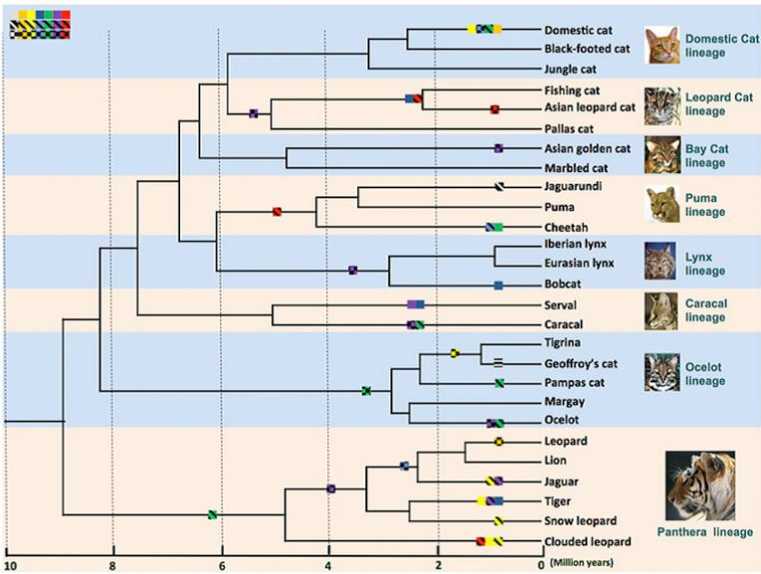5,300 years ago, the village of Quanhucun in Shaanxi, China, had evidence that humans and cats were commensal, according to a paper early this year from Yaowu Hu. The cats ate millet-based food and ate pests that attacked the grain stores. How mutualistic that relationship could have been is now made evident by a fuller exploration of the feline genomes responsible, filling in some of the gaps in our knowledge of this symbiosis between 9k and 4k years ago. Now we can open up the genome in a new research effort.
The new paper in PNAS . by Michael J Montague, Gang Li of Washington University School of Medicine, St Louis, and Texas A&M University and many others features the genomic discovery of the domestication genes that cats have evolved. It is entitled, Comparative analysis of the domestic cat genome reveals genetic signatures underlying feline biology and domestication
. Friendliness, memory and learning abilities are the major attributes given by the genetic loci concerned. Use of the genome information, even with other species will probably influence pet breeders in the future, as cats without these genes are certainly wild
in attitude.
The typical female Abyssinian breed was chosen as a starter breed, with 6 others, and then many felid species, from tiger to bobcat, for comparison. If you really want to know how snow leopard genetics have been worked out, have a look here! Other mammals from human and horse to mouse and dog were checked out to complete the exercise on aligning similar gene sequences. The diagram here shows how intricate the relationships between all the cat groups are. We hope you appreciate the author’s hard work as much as we do.
The domestic cat’s high quality genome assembly is the main part of this work. The hypercarnivorous diet is selected for with lipid metabolism genes, while vision and hearing could have been assumed to be essential for the cats’ hunting ability. As far as the domestication syndrome is concerned, behavioral genes are associated with the neural crest-related area of the genome.
The signatures of selection were in, gene knockout models affecting memory, fear-conditioning behavior, and stimulus-reward learning
. Strong selection was also noted for the first time on a gene connected to the Birman gloving pigmentation pattern. In some of these ways, the ancestral wildcat genome was altered. It was only in 13 genes that the changes were made to produce the cuddly animal we now treasure so much. From rodent-killer to lap-cat is not such a major step it seems.










